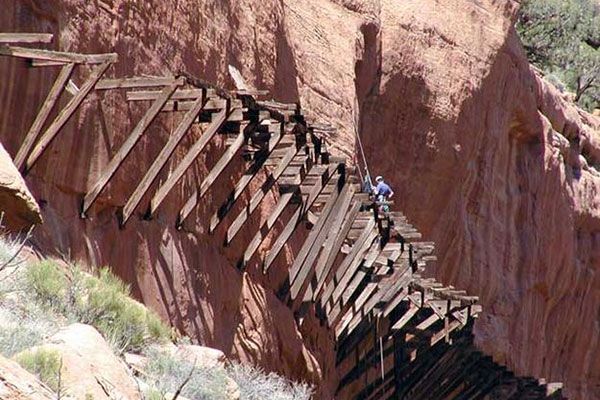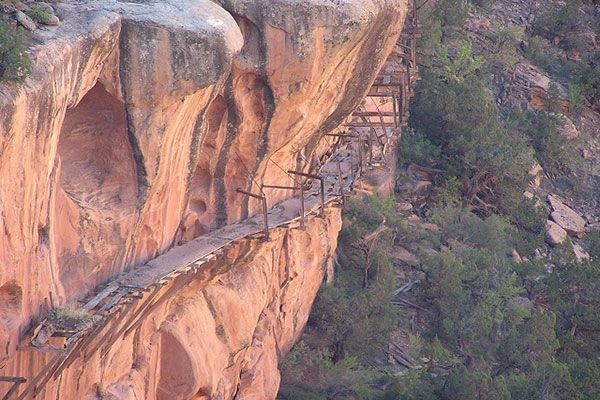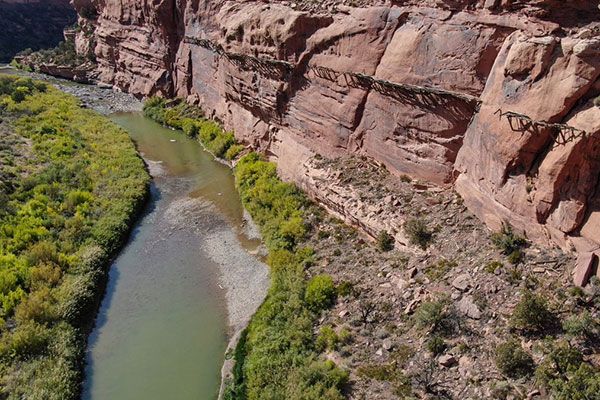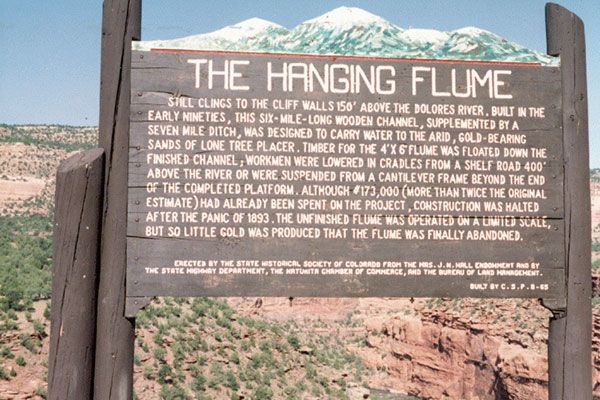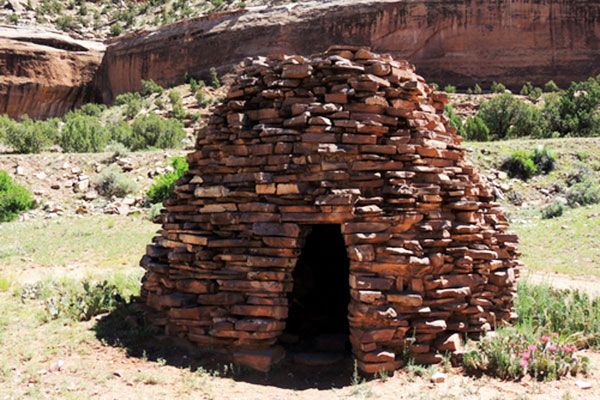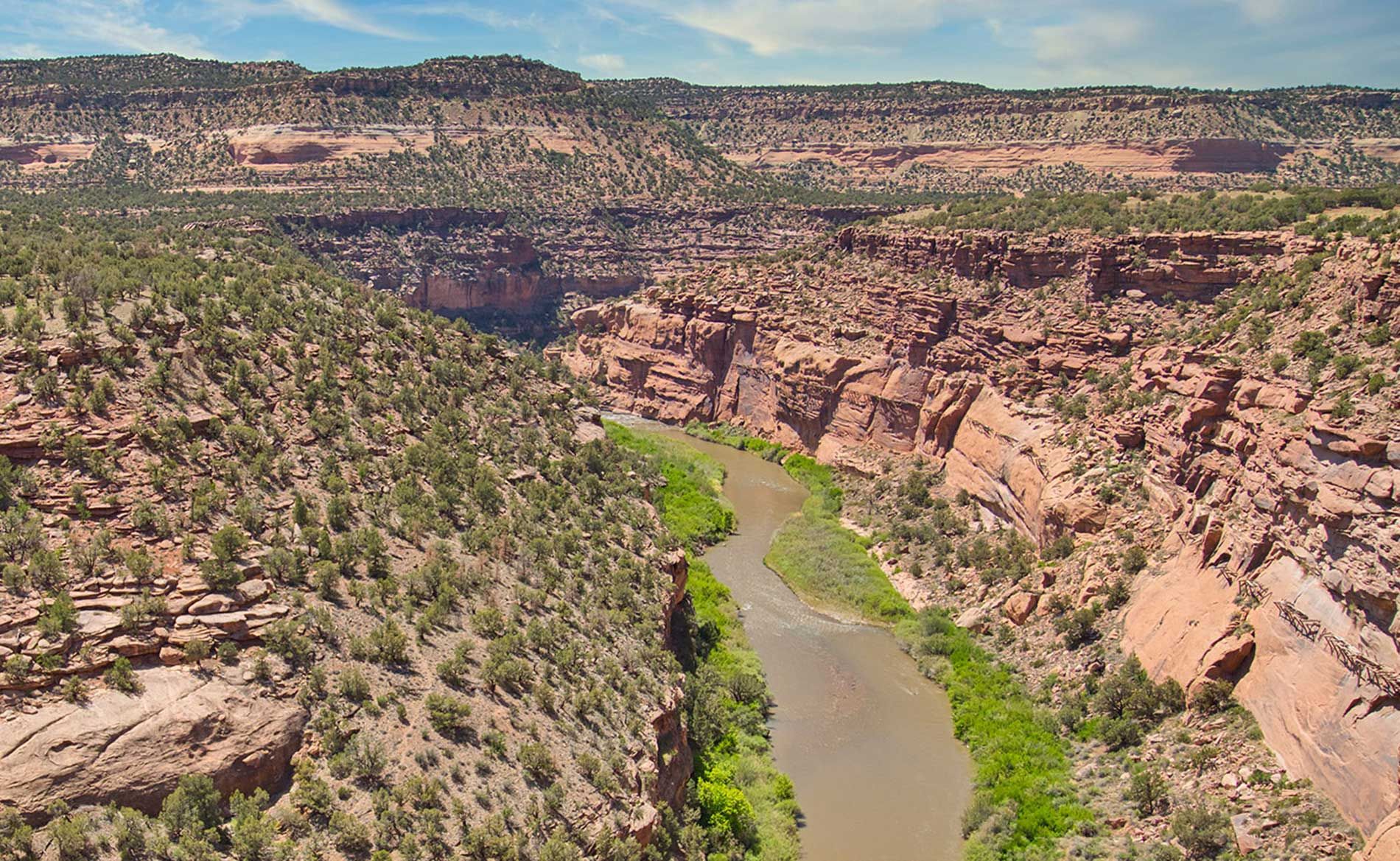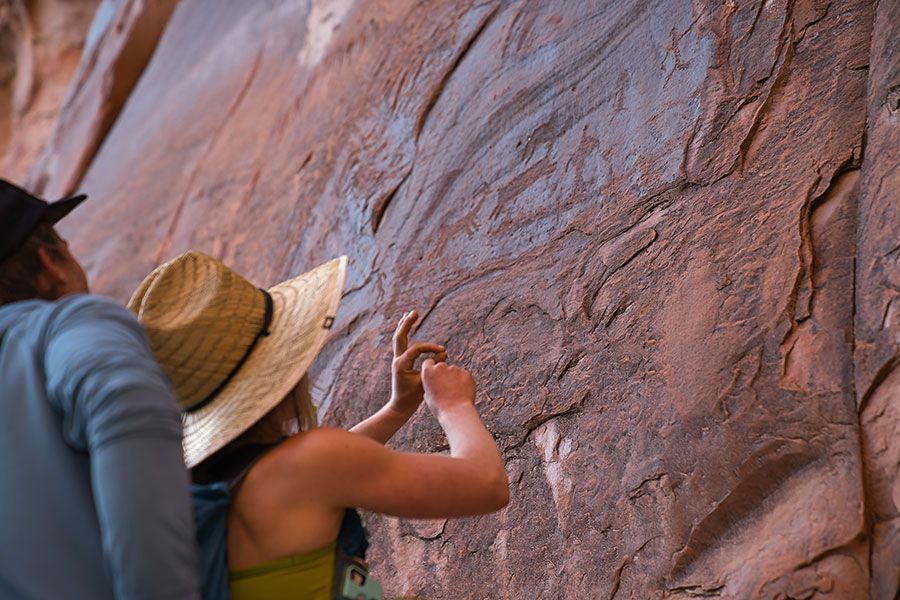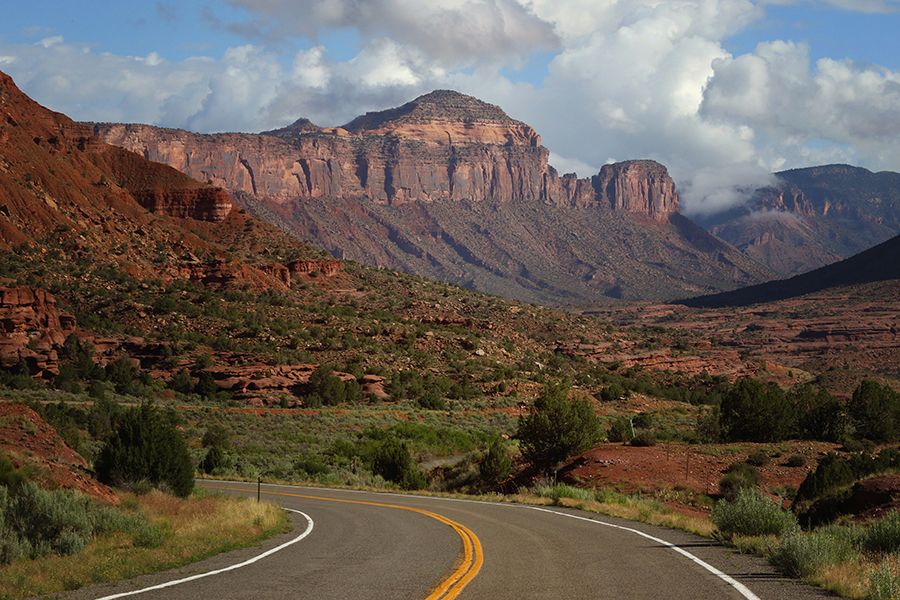The Hanging Flume
on the Unaweep-Tabequache Scenic & Historic Byway
Accessibility Tools
on the Unaweep-Tabequache Scenic & Historic Byway
Holding fast to the cliffs high above the San Miguel River, the Hanging Flume is much more than a marvel of engineering. It is a statement driven in stone – a monument to an era of innovation and “can-do” attitudes.
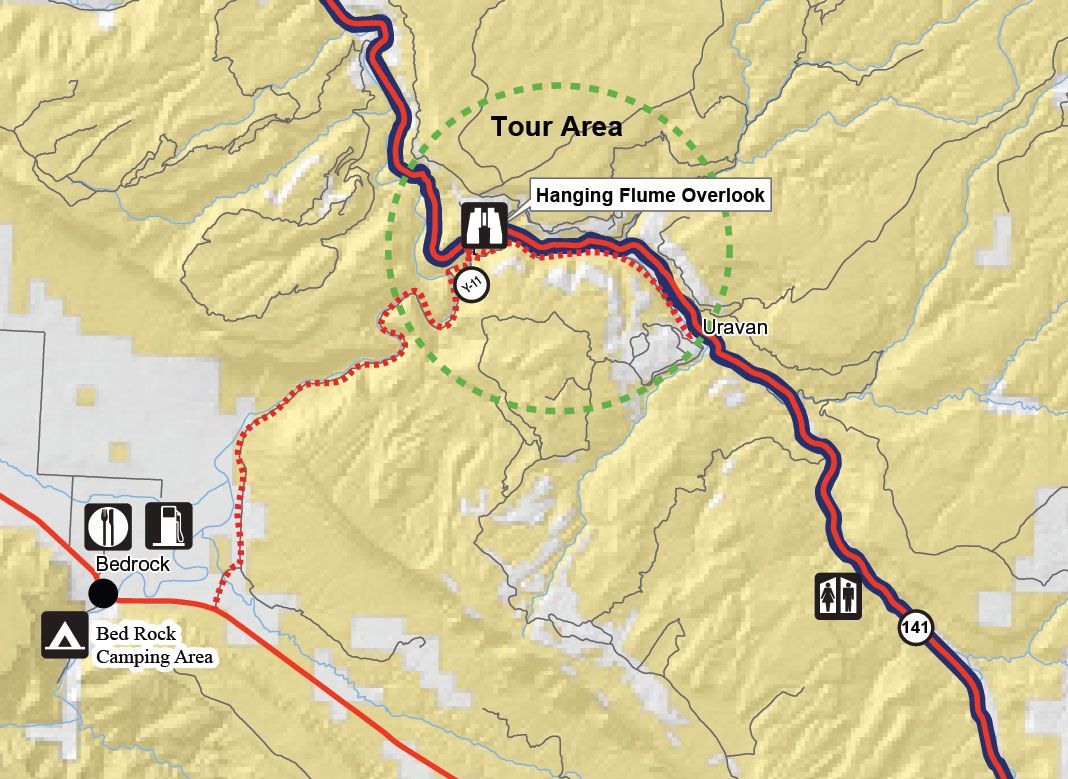
HISTORY
The time was 1888 and Telluride was the largest town in the southwestern corner of the newly formed state of Colorado. This remote mountain town was full of men crazy with gold fever. Not just individuals with picks and pans seeking fortune, but investors and businessmen with newly made capital from the Industrial Revolution were eager to invest large sums of money into the gold rush. The Hanging Flume was one such large corporate investment for the times. However, in less than a decade, the gold rush was over and with it the operation of the Hanging Flume.
What you see today are remnants of what was, and still is, a great engineering marvel. Unfortunately, time has taken a great toll, not only on the condition of the Hanging Flume, but its history as well. Today, researchers, historians and “ologists” of all kinds, have pieced together the story of the Hanging Flume.
The Hanging Flume is on the Endangered Places List of Colorado Preservation, Inc. as well as the 2006 World Monuments Fund Watch List. It is on the National Register of Historic Places and is a prominent heritage tourism attraction on the Unaweep-Tabeguache Scenic & Historic Byway.
The Flume was built for hydraulic placer mining. After placer mining activities ended, it was used as an irrigation source for ranching, then abandoned, looted and scavenged for timber and other resources.
Gold mining turned to uranium mining and towns came and went. Roads were built and then re-built. Time has brought changes over the centuries and little remains of the Hanging Flume.
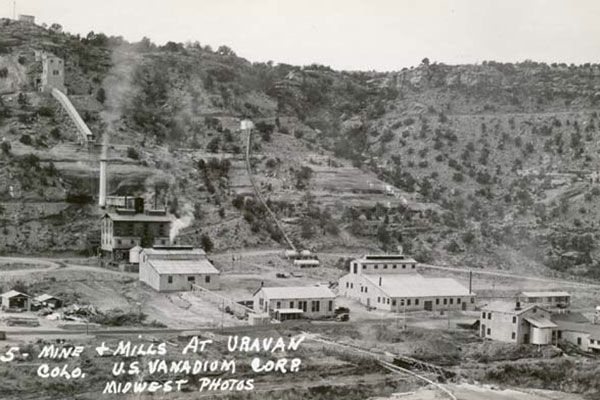
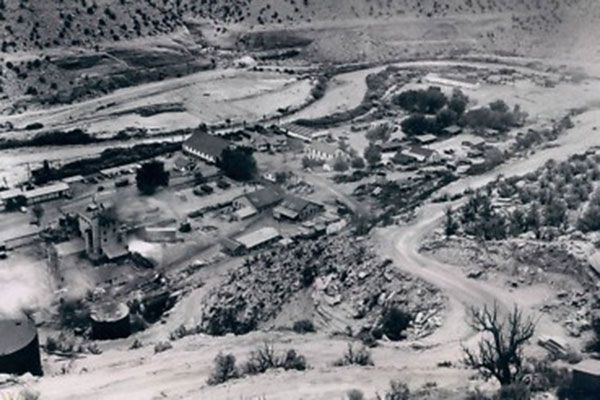
THE FATE OF THE HANGING FLUME
Built over the course of three years, from 1889 to 1891, it functioned for another three years as various owners struggled to turn a profit. After Montrose Placer Mining Company went out of business, Nathaniel Turner and his new company, Vixen Alluvial Gold Mining Company (Vixen), attempted to extend the Flume to the other three mining claims downstream, but they were underfunded and unsuccessful.
The venture was sealed with “The Panic of ‘93” when Wall Street futures came tumbling down in 1893. Just like today, the effects of Wall Street encompassed the entire nation including Colorado’s western frontier. In the end, the Hanging Flume was considered a failure. It was left hanging on the sandstone canyon walls, and all that remains is what you see today.
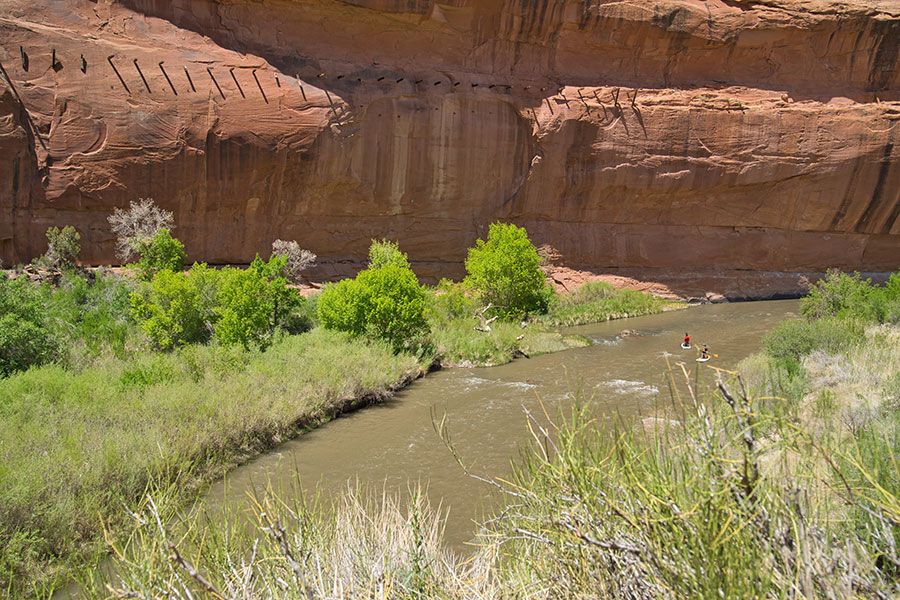
GOLD FEVER
During Telluride’s gold rush in the last decades of the 1800s, the mountains and hills were covered with eager men digging for fortune. The crowded conditions left some wondering what was being washed away by the San Miguel River and other rivers draining from the San Juan Mountains. Soon, some 30 miles of the San Miguel River were being panned. The entire area was heavily populated with miners prior to the construction of the Hanging Flume.
The San Miguel River and it’s buried fortunes not only attracted individuals, but companies backed by money from the East and the growing urban West. One such company was the Lone Tree Mining Company supported by wealthy investors from Salt Lake City in Utah Territory. They filed on several claims along the Dolores River between 1883 and 1885. The northern-most claim, the Bancroft Claim, was located just 4 miles downstream from the confluence of the Dolores and San Miguel Rivers and would become the end point of the Hanging Flume. In the beginning, the Lone Tree Mining Company worked their claims by building a ditch and bedrock flumes and diverting water from Mesa Creek. In 1888, they sold their claims to the Montrose Placer Mining Company, a larger, more ambitious company from back East.
Composed of investors from East St. Louis, Illinois they quickly realized they needed a larger, more reliable source of water to make the Bancroft Claim highly profitable. Just out of reach flowed the Dolores and San Miguel Rivers. The solution was hydraulic mining and that required water pressure and a lofty plan – a flume.
The massive scale of the Hanging Flume enterprise was intimidating. But gold fever and the riches it could reap are extreme motivators, and thus the Hanging Flume was conceived.
Flumes had been built in California for years and often required only minimal skills. In some places the Flume could consist of a simple earthen ditch. To cross arroyos and washes, water could be funneled through flume boxes supported by trestles. But in the canyons of the San Miguel and Dolores Rivers, minimal engineering skill was not enough. To complete the route at the proper low gradient, the Flume would have to traverse seven miles of sheer rock walls, at times suspended hundreds of feet above the river.
This enormous feat needed a skillful and experienced leader, and that leader was Nathaniel P. Turner. His knowledge of flume construction turned the plan into a reality.
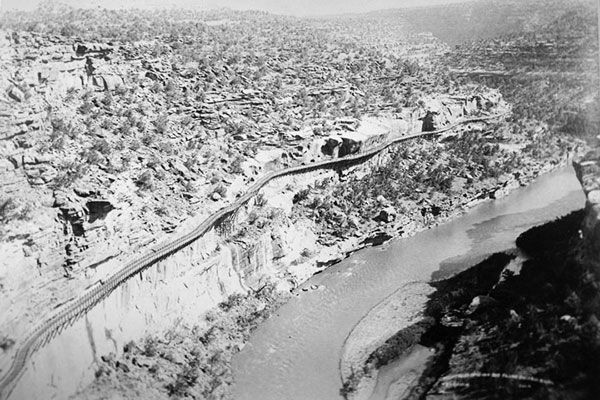
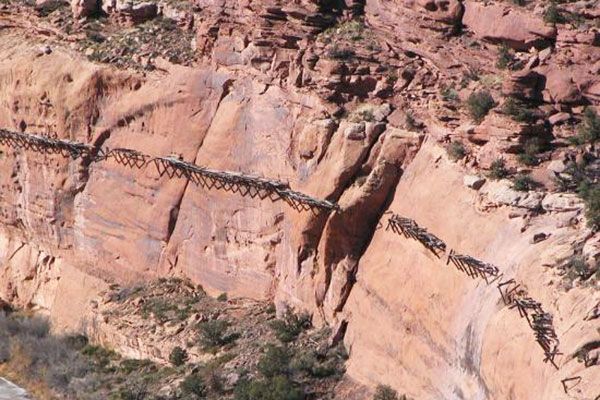
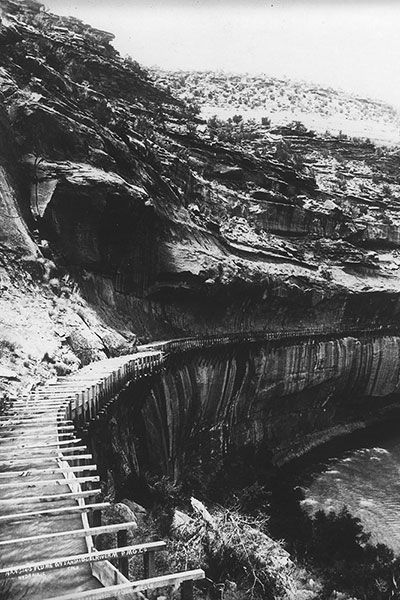
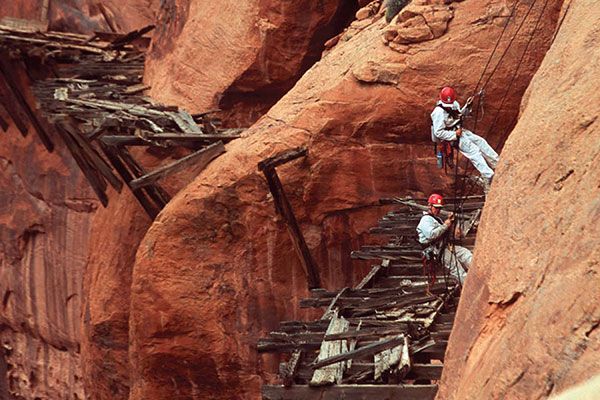
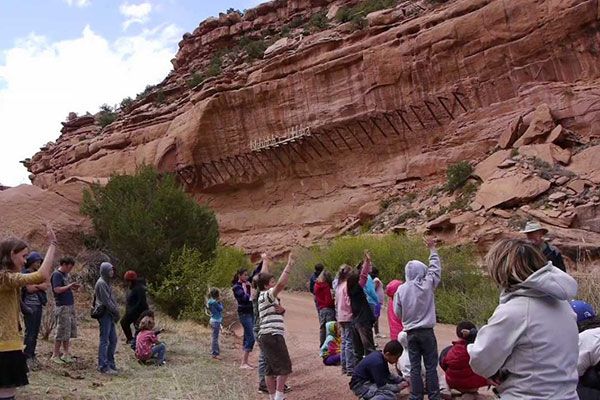
AN ENGINEERING FEAT
The Flume was constructed using earthen and wooden canals, wooden bents and a wooden box that were secured together by iron rods and fasteners. Without photographs, engineered drawings or written accounts of the Flume’s construction, experts can only speculate on how it was built. In 2004, a group of scientists set out to unravel a complex and fascinating story with dimensions that went far beyond ordinary technical questions.
It is estimated that 25 men worked on the flume and used local materials. The iron rods were custom shaped on-site by hand. The wood for the beams and trestles was logged from nearby Pine Flats in Utah and Carpenter Ridge in Colorado.
To reach the water pressure necessary to adequately mine the placer deposits, the Hanging Flume had to achieve a .17% grade – that is only a 90 foot drop over the nearly 10 mile long Flume. Without today’s sophisticated equipment, we can only speculate that they used triangulation to stay on track. Many mysteries remain, and investigation continues into the wonder that is the Hanging Flume.
Y11 Road is a non-paved road and can become slippery and/or icy with inclement weather. It also gets narrow in places and there are no turn-arounds for larger vehicles.
URAVAN: Today, the once booming old town of Uravan is gone. The Hanging Flume started about ¼ mile upriver from here.
1.7 MILES: Here you begin to see remnants of the Hanging Flume. Up to this point, the Flume consisted of an earthen canal that once traversed the land where the highway is today.
2.1 MILES: This section of the flume transitions from earthen canal back to hanging flume. The investigative team noted that this section varies in construction details. We can only assume that this section served as testing ground to help the Flume’s engineers figure out the best techniques for constructing the rest of the Hanging Flume.
3.1 MILES: This is a great area to see the bracing used on the Hanging Flume. Each one of the bents were attached to the sandstone wall with iron rods. Each iron rod was custom fit to the curvature of the rock face.
3.7 MILES: This is a great place to pull off and have a picnic. You can get an eye level view of the Hanging Flume from here and easily see the various parts used in its construction.
4.4 MILES: Welcome to the confluence of the San Miguel and Dolores Rivers. The cliff above the confluence is Windy Point, a great viewpoint you will visit later on this tour. Look out into the rivers where they intersect. The San Miguel River is one of the last natural flowing rivers in Colorado and is crystal clear. The Dolores River flows out of McPhee Reservoir. It is full of sediment providing stark contrast between the two rivers.
You can continue another 12 miles along Y11 Road and you will end up in Bedrock, Colorado or turn around to continue this self-guided tour along Highway 141. Make sure you stop in Uravan where you began this tour.
You are now back in Uravan where you began this tour. Reset your trip odometer at the intersection of Y11 and Highway 141 and turn left onto the highway towards Gateway.
1.8 MILES: This stop is above stop 2.1 along Y11 Road. Here you can see the remnants of the beginning of the Hanging Flume. As you get closer to the edge of the cliff, you will notice a depression in the ground. This is actually a part of the Hanging Flume’s earthen canal. If you are facing the river, look to your left for the stacked sandstone rock wall that we pointed out earlier. This wall was used to help contain and direct the water as it transitioned from hanging flume to earthen canal.
2.3 MILES: Park at the road pull-off to the left. Look across the highway and about 50 feet to the right. You will notice a carved and painted burro in the rock wall. This was painted in the early 1900s as a tribute to the burros that helped construct the Hanging Flume.
3.4 MILES: This is Windy Point. Park up top and hike down to the lower overlook for a spectacular view of the confluence of the San Miguel and Dolores Rivers. Don’t forget your camera! The trail down to the lower overlook is an ox-cart trail constructed to haul materials and supplies down to the Hanging Flume workers. Use caution when looking over the edge as there are no safety railings. Please watch where you step; this area has an abundance of crypto-soil, a living organism that supports plant life and prevents erosion. It takes decades for soils like the ones found here to form. Stay on the slick rock as much as possible.
5.2 MILES: Hanging Flume Overlook Interpretive Stop. From this stop, you can see the most complete section of the Flume. Look down on the river and to the left for a “dock.” It was used between 1920 and 1980 as a pump station for other placer mining attempts.
7 MILES: Pull off to the side of the highway to view the Charcoal Oven. This oven burned local timber to create charcoal for the small forges used along the Flume. The structure is on private land, so please admire from the roadway. The Hanging Flume exited the canyon near this stop and crossed the highway towards the pressure box at the Bancroft Placer claim – the final stop on this tour. On the opposite side of the road from the Charcoal Oven, you can see sections of the earthen canals. The distinguishing features are the stacked rocks, similar to what you saw at the first stop along Highway 141.
7.4 MILES: Welcome to the Bancroft Claim placer site. All that is left of the 3 years of placer mining are rows and rows of large rocks and gravel. As the workers used the sluice box, the large rocks, having no value to the miners, were picked out and piled in rows out of the way.
*Special thanks to Jerald Reid for putting this tour together and sharing it with us.
